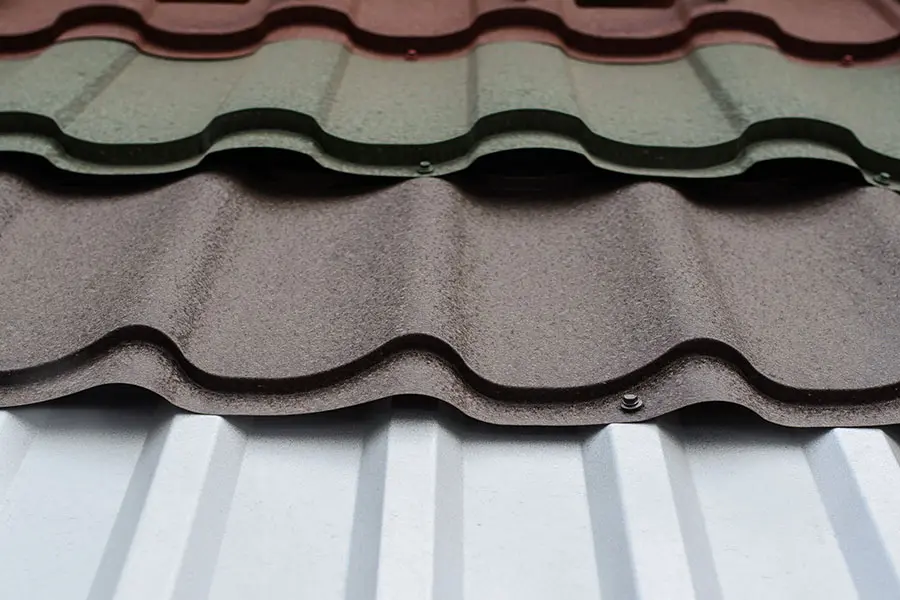Exactly How Gainesville Roofing Companies Can Change Your Home's Exterior
Exactly How Gainesville Roofing Companies Can Change Your Home's Exterior
Blog Article
Ideal Practices for Ensuring Appropriate Roofing Ventilation
A balanced intake and exhaust air vent proportion, typically 1:300, plays a pivotal role, with consumption vents ideally put at the reduced edge of the roof for awesome air entry and exhaust vents at the top for cozy air exit. Keeping insulation away from vents is crucial to prevent airflow restriction.
Understand Ventilation Essentials
Effectively recognizing air flow basics is crucial for guaranteeing the durability and efficiency of roof. Effective ventilation minimizes dampness accumulation and temperature extremes in the attic room, both of which can lead to substantial architectural damage gradually. A well-ventilated roofing assists in protecting against usual issues such as mold and mildew development, timber rot, and ice dams, which can compromise the integrity of the roof materials and the underlying structures.
The key objective of air flow is to assist in the activity of air, permitting for a regular exchange in between the outside and indoor environments. This balance is attained via a mix of intake and exhaust vents that interact to maintain optimal airflow. Consumption vents, generally located along the eaves or soffits, allow fresh air to get in the attic room area, while exhaust vents, typically located at or near the roofing ridge, allow hot, humid air to run away.
Trick aspects affecting the effectiveness of roof air flow consist of correct placement, sufficient sizing, and ensuring that both consumption and exhaust vents are unblocked. Regular evaluation and maintenance are critical to determine potential blockages, damages, or inadequacies in the ventilation system, thereby securing the roof covering's performance and sturdiness.
Sorts Of Roofing System Vents
Roof covering vents play a critical duty in preserving effective attic ventilation and, by extension, the total wellness of the roof system. Different kinds of roof vents are offered, each with unique advantages tailored to certain roof covering demands. Ridge vents, for instance, are set up along the roof's height, allowing cozy, moist air to escape from the attic. They use continual air flow and blend perfectly with the roofline, making them both reliable and visually pleasing.

Soffit vents are installed under the eaves and work in tandem with roofing system vents to make certain a balanced consumption and exhaust system. By permitting cooler air to enter from below, soffit vents promote the expulsion of warm air with top vents. Gable vents, situated on the exterior wall surfaces of the attic room, deal an additional effective option, especially in homes with gable roof coverings.
Evaluate Your Existing Air Flow

Following, take into consideration the age and condition of your roofing materials and ventilation elements. Older systems may not abide by current building regulations or might have weakened with time, minimizing their efficiency. Conduct a complete evaluation to identify any signs of damage, such as rust, damages, or gaps that could endanger the system's efficiency.
Additionally, determine the attic room temperature level and moisture degrees. Heats and moisture can show insufficient ventilation - roofing companies. Use a hygrometer and thermometer to obtain exact analyses, contrasting them with exterior conditions. Relentless disparities recommend potential problems that require attending to.
Installment Best Practices
Efficient installation of roofing ventilation systems is vital for making sure optimum efficiency and long life. Correct setup starts with recognizing the details ventilation needs of the roofing and the structure it covers. This includes determining the appropriate proportion of intake to tire vents, commonly adhering to the 1:300 policy, which states one square foot of air flow for each 300 square feet of attic room flooring space.

The positioning of vents is similarly essential. Consumption vents ought to be installed at the roofing's lower edge, often in the soffits, to permit amazing air to enter. Exhaust vents, on the various other hand, need to be mounted near or at the roofing system's optimal to help with the leave of warm, damp air. This develops a natural airflow that assists keep temperature level and wetness equilibrium within the attic room area.
Seal all vent links meticulously to avoid air leakages and possible water infiltration. Usage high-quality materials and comply with producer guidelines to guarantee longevity and efficiency. Furthermore, incorporating ridge vents with baffles can significantly enhance air flow effectiveness by protecting against wind-driven rain and snow from going into the attic room.
Ultimately, exact installation of roofing ventilation systems reduces possible concerns such as mold right here and mildew growth, ice dams, and see post structural damage, making sure the roof covering's honesty and the structure's general health and wellness.
Regular Upkeep Tips
Consistency in maintenance techniques is essential to ensuring the lasting performance of roof covering ventilation systems. Throughout these assessments, ensure that vents are cost-free of debris, nests, and various other obstructions that can hamper airflow.
Use a soft brush or a vacuum cleaner to remove dirt and particles from consumption and exhaust vents. Be careful not to harm the air vent screens or louvers throughout the procedure.
Proper insulation is just as vital. Guarantee that attic insulation does not block the vents, as this can badly limit air movement. Rearrange or replace it to maintain an efficient barrier. if any type of insulation has actually shifted or settled.
Lastly, change any kind of harmed or missing out on components quickly. Busted vents, fractured roof shingles, or worn-out blinking can all add to poor air flow and needs to be attended to without delay. Regular upkeep guarantees that the roof ventilation system functions optimally, thereby extending the life expectancy of the roofing system itself.
Verdict
Making certain appropriate roof air flow is extremely important for preserving the effectiveness and toughness of a roof covering system. Adherence to the 1:300 intake and exhaust vent proportion, paired with the strategic placement of vents, is important.
A balanced consumption and exhaust air vent ratio, frequently 1:300, plays a crucial function, with intake vents ideally positioned at the lower side of the roof covering for great air entrance and exhaust vents at the height for warm air exit. Consumption vents, commonly situated along the eaves or soffits, permit fresh air to enter the attic room space, while exhaust vents, often located at or near read this the roof ridge, make it possible for warm, damp air to leave.
Soffit vents are set up under the eaves and job in tandem with roof vents to guarantee a well balanced intake and exhaust system. By permitting cooler air to go into from below, soffit vents promote the expulsion of hot air with top vents. Adherence to the 1:300 consumption and exhaust vent ratio, combined with the calculated placement of vents, is crucial.
Report this page